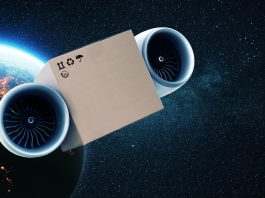University of the West of Scotland researchers have reported a technology breakthrough that promises to enhance the sensitivity of gravitational wave detectors.
The groundbreaking development in thin film technology will enhance the sensitivity of current and future gravitational wave detectors. The innovation, developed by academics at UWS’s Institute of Thin Films, Sensors, and Imaging (ITFSI), could enhance scientists’ understanding of the Universe.
The research, ‘Amorphous dielectric optical coatings deposited by plasma ion-assisted electron beam evaporation for gravitational wave detectors,’ is published in Applied Optics.
The importance of studying gravitational waves
First predicted by Albert Einstein’s theory of general relativity, gravitational waves are ripples in the fabric of spacetime. These ripples are caused by the most energetic events in the cosmos, such as black hole mergers and neutron star collisions.
Detecting and studying gravitational waves provides insights into the nature of the Universe.
Dr Carlos Garcia Nuñez, Senior Lecturer at the School of Computing, Engineering and Physical Sciences (CEPS), said: “At the Institute of Thin Films, Sensors, and Imaging, we are working hard to push the limits of thin film materials, exploring new techniques to deposit them, controlling their properties to match the requirements of current and future sensing technology for the detection of gravitational waves.
“The development of high reflecting mirrors with low thermal noise opens a wide range of applications, which covers the detection of gravitational waves from cosmological events to the development of quantum computers.”
Reducing thermal noise is essential to increase the sensitivity of gravitational wave detectors
The technique used in this work was originally developed and patented by Professor Des Gibson, Director of UWS’s Institute of Thin Films, Sensors, and Imaging. The technique has the potential to enable the production of thin films that achieve low levels of thermal noise.
Reducing thermal noise in mirror coatings is vital in increasing the sensitivity of a current gravitational wave detector.
The breakthrough is set to allow the detection of a wide range of cosmological events.
Professor Gibson said: “We are thrilled to unveil this cutting-edge thin film technology for gravitational wave detection. This breakthrough represents a significant step forward in our ability to explore the Universe and unlock its secrets by studying gravitational waves. We believe this advancement will accelerate scientific progress in this field and open up new avenues for discovery.
“UWS’s thin film technology has already undergone extensive testing and validation in collaboration with renowned scientists and research institutions. The results have been met with great enthusiasm, fuelling anticipation for its future impact on gravitational wave astronomy. The coating deposition technology is being commercialised by UWS spinout company, Albasense Ltd.”
The breakthrough will provide new solutions in other industries
Not only will the innovation make the gravitational wave detector of the future more precise and sensitive to cosmic events, but the development of coatings with low thermal noise will also provide new solutions to atomic clocks and quantum computers.
New solutions are required for these high-precision devices as part of the United Nations’ Sustainable Development Goals 7, 9, and 11.









